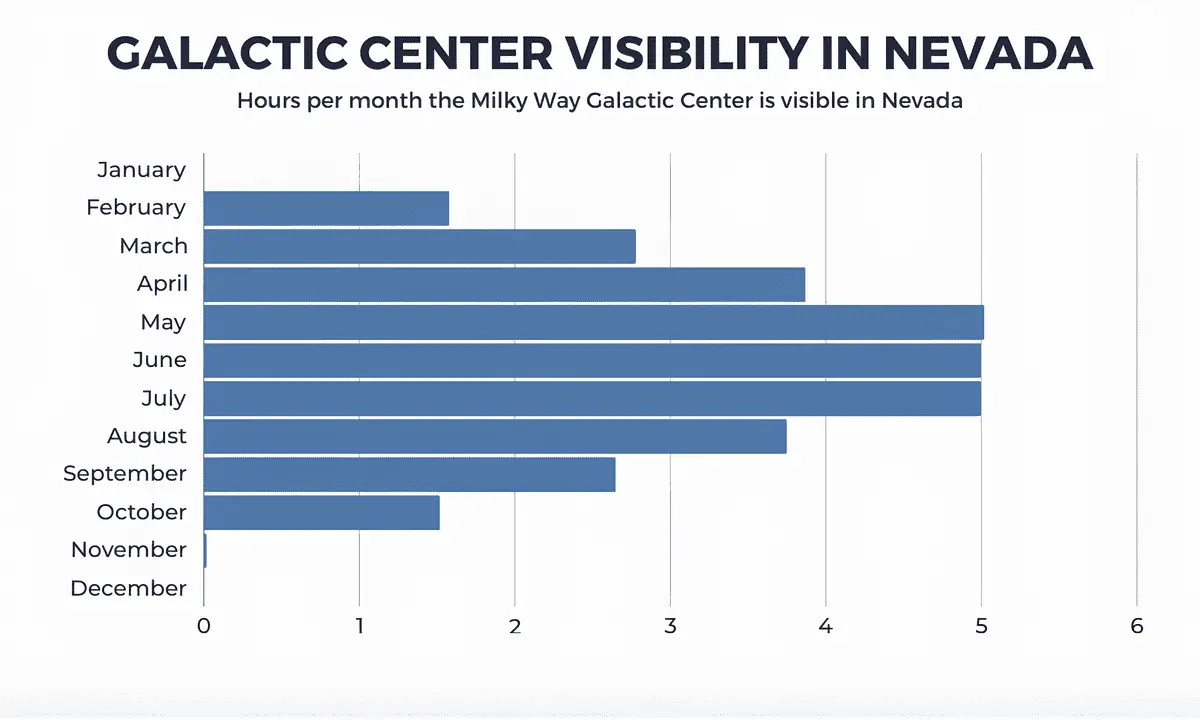You’ve heard Nevada’s night skies are a gateway to the universe. But maybe you’ve felt overwhelmed by where to start your stargazing journey. The vastness can be daunting, and the options are endless.
Yet, with the brightening glow of city lights, finding that perfect dark spot can seem like searching for a star in daylight. You want to capture the cosmos through your lens or eyes, but the question is — where?
Fear not because I’ve charted your path to the stars. In this article, I’ll show you how to find Nevada’s darkest skies for an unmatched celestial show. Let’s journey to the stars with practical tips and locations that promise the night sky as it was meant to be seen.
Key Things To Know:
- Nevada’s dark skies are perfect for stargazing, thanks to low light pollution and remote locations.
- Use a dark sky map and plan around new moons for the best celestial views.
- Pack appropriate gear, like telescopes and warm clothes, for a comfortable experience.
- Visit places like Massacre Rim for the darkest skies and the most stunning night sky observations.
Recommended For You
Understanding The Nevada Dark Sky Map
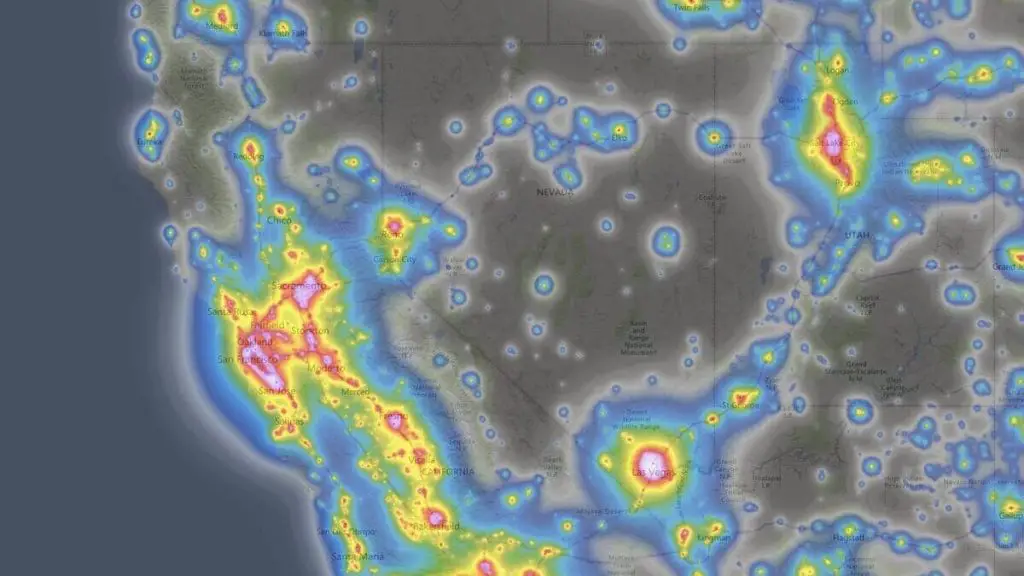
I’ve been captivated by Nevada’s incredible dark skies, which provide amateur astronomers and stargazers alike with a breathtaking view of the cosmos. The state’s remote location and low light pollution make it the perfect destination for observing constellations, the Milky Way, and even distant celestial objects with a telescope.
In this section, I’ll delve into what makes Nevada’s dark skies unique and how you can best experience them.
Definition of Dark Skies
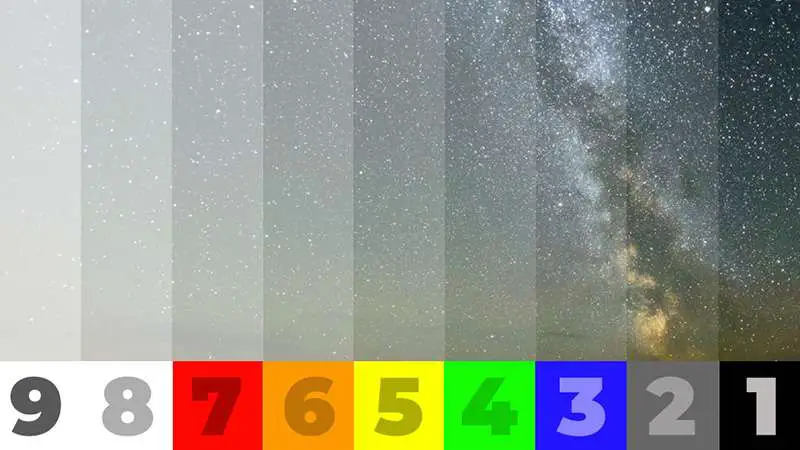
When I talk about “dark skies,” I’m referring to the darkness in the night sky caused by natural and artificial light sources.
Through my experiences, I gauge darkness using the Bortle scale, which ranges from 1 (pristine, unblemished skies) to 9 (entirely washed out by light pollution).
Nevada is known for having some of the darkest skies in the lower 48 states, particularly in areas like Massacre Rim, certified as an International Dark Sky Sanctuary in 2019.
To fully appreciate Nevada’s dark skies, consider these tips and recommendations:
- I always plan my stargazing trips around the moon phases. Ideally, stargazing during the week of a new moon when the sky is darkest.
- Bring the appropriate equipment, such as a telescope, binoculars, or a camera with a tripod to capture stunning images of the night sky.
- Familiarize yourself with the constellations visible during your visit. Some apps can help you identify them in real-time.
- Dress appropriately for the weather, as nighttime temperatures in the desert can drop significantly.
When it comes to finding the perfect location to stargaze, consider visiting one of the following Nevada destinations known for their exceptional dark skies and sky brightness:
- Massacre Rim Dark Sky Sanctuary
- Tonopah Stargazing Park (Accessibility to Dark Skies)
- Great Basin National Park (Designated Dark Sky Park)
Nevada’s dark skies offer a stunning and unforgettable experience. Take the time to prepare and choose your destination wisely to make the most out of your celestial adventure.
Read my article on the best stargazing spots in Nevada and get a free Google Map of each location.

FREE STARGAZING CHECKLIST
My 5-page Stargazing Checklist will enhance your astronomical observations.
Follow this free checklist to navigate the night sky with confidence, clarity, and a sense of preparedness for a rewarding stargazing experience.

Impact of Light Pollution
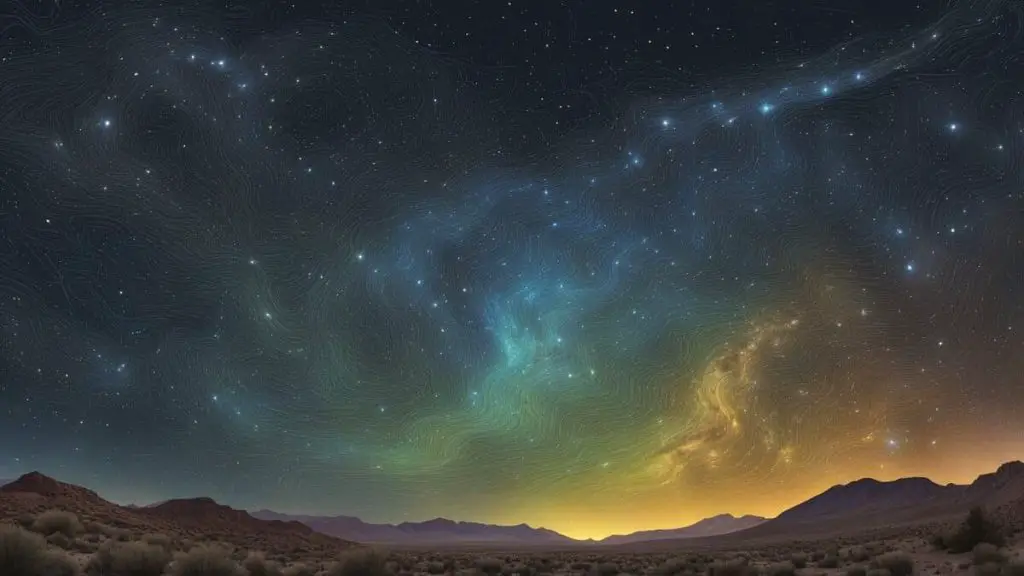
From what I’ve seen, light pollution significantly affects the quality of our skies. It limits our ability to observe celestial objects. It’s caused by excessive artificial light coming from cities, towns, and other sources. In Nevada, fortunately, there are dark sky maps available to find the darkest spots for stargazing.
To measure light pollution, you can use the Bortle Scale, which ranges from one to nine. The lower the number, the less light pollution and better conditions for stargazing. For example, a Bortle scale of one means you’re in a pristine dark sky location with no visible light pollution.
Here are some negative impacts of light pollution on the environment and human life:
- Disrupts wildlife behavior, including migration patterns and feeding habits
- Affects human health by altering our sleep cycles and contributing to insomnia
- Hinders astronomical research and sky observation
To find the best spots for stargazing in Nevada, you can use an IDA-certified light pollution map. These maps will help you pinpoint areas with the least artificial light, creating an optimal environment for observing the night sky.
When choosing a location based on the Bortle scale, consider these tips:
- Choose a spot with a Bortle Scale of three or lower if possible
- Avoid areas near cities or significant sources of artificial light
- Check the weather forecast beforehand, as clear skies provide better stargazing conditions
By following these tips and using the available resources, you can find the best locations in Nevada for gazing at the stars and enjoying the wonders of the night sky.
Dark Sky Observations
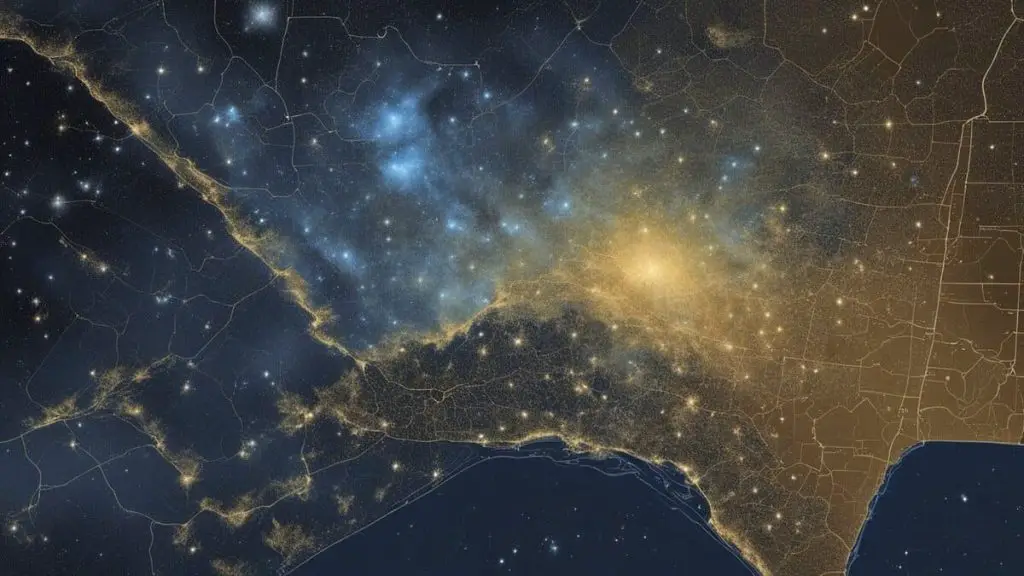
Nevada offers incredible opportunities for stargazing and astrophotography enthusiasts. With vast public lands and minimal light pollution, you can immerse yourself in the wonders of the night sky.
Here are some top spots to explore:
- Massacre Rim Dark Sky Sanctuary: Found in the northwest corner of Nevada, this International Dark Sky Sanctuary boasts some of the darkest skies on Earth. It’s an unforgettable experience not to be missed!
- Tonopah Stargazing Park: Open 24/7, this park offers observation sites for all levels of stargazers. Check for seasonal closures before planning your visit.
- High Rock Canyon: Nestled in northern Nevada, this is an excellent spot for stargazing and exploring the surrounding wilderness.
Attending star parties and astronomy festivals is a fantastic way to enhance your dark sky experience. These events often feature expert speakers, telescope observations, and astrophotography workshops.
Watch for events hosted by the International Dark Sky Association and local astronomy clubs.
Here are a few tips for a successful dark sky observation:
- Check the weather: Clear skies are essential for stargazing.
- Plan your visit around moon phases: A new moon provides the darkest skies.
- Bring the right gear: A telescope or binoculars, a red flashlight to preserve night vision and warm clothing are necessary.
- Practice patience: It takes time for your eyes to adjust to the darkness.
So, whether you’re into stargazing, astrophotography, or simply being in awe of the cosmos, the Nevada dark sky parks and sanctuaries offer unforgettable experiences and breathtaking views.
Dark Sky Locations in Nevada
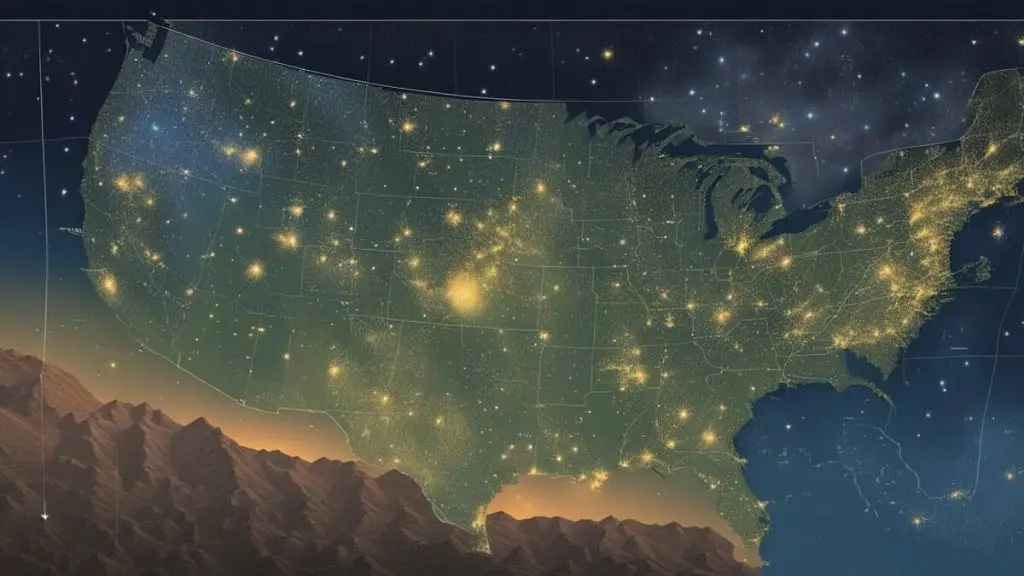
Ely
Ely offers some fantastic dark sky spots for stargazing. With minimal light pollution, you can enjoy amazing celestial sights like shooting stars, constellations, and even meteor showers. Be sure to bring binoculars and a blanket to stay cozy while you marvel at the night sky.
Massacre Rim
Massacre Rim is an International Dark Sky Sanctuary, providing one of the darkest skies in the United States. Located in northwestern Nevada, you can experience breathtaking views of the Milky Way and other celestial wonders.
Gerlach
Gerlach, near the Black Rock Desert, is another excellent destination for dark sky enthusiasts. With vast open spaces and minimal light pollution, you can easily spot distant galaxies, nebulae, and star clusters.
Death Valley
Although partially in California, Death Valley National Park offers incredible dark sky experiences. With its vast, open landscape, you can enjoy stunning celestial sights that will leave you breathless.
Tonopah
Tonopah is home to an astronomical park boasting some of the most pristine skies for stargazing. The Tonopah Stargazing Park offers minimal light pollution, allowing you to enjoy awe-inspiring views of the cosmos.
Vya
Nestled in the remote northwest corner of Nevada, Vya is a dark sky lover’s paradise. With little to no light pollution, you can enjoy unbelievably clear views of the stars and other celestial objects.
Great Basin National Park
With its high elevation and remote location, Great Basin National Park offers unparalleled stargazing opportunities. Take advantage of the park’s various programs, like the annual Astronomy Festival, to make your star-filled nights even more special.
The Great Basin region houses numerous fantastic stargazing spots, including Cathedral Gorge and Angel Lake. You’ll love the serenity and the clear, open skies that make for a perfect night of stargazing.
Cathedral Gorge
Cathedral Gorge State Park is another fantastic destination for stargazers. You’ll be in awe of the stunning geological structures during the day and the mesmerizing night skies once the sun sets.
Massacre Rim Wilderness Study Area
The Massacre Rim Wilderness Study Area provides a prime dark sky experience. As it lies within the greater Massacre Rim region, stargazers can expect the same exceptional celestial views the area is famous for.
Sand Mountain
Sand Mountain, an enormous sand dune in central Nevada, is an excellent stargazing spot. Enjoy the unique combination of towering dunes and the dazzling night sky for an unforgettable experience.
Black Rock Desert
Famous for hosting the annual Burning Man event, the Black Rock Desert also offers ideal conditions for stargazing. The vast, flat terrain and minimal light pollution provide an incredible panorama of the night sky.
Beaver Dam
Beaver Dam State Park, with its remote location, offers a serene environment for dark-sky observers. Surrounded by nature, you will be amazed by the multitude of stars that fill the sky in this beautiful location.
Preparing for a Dark Sky Adventure
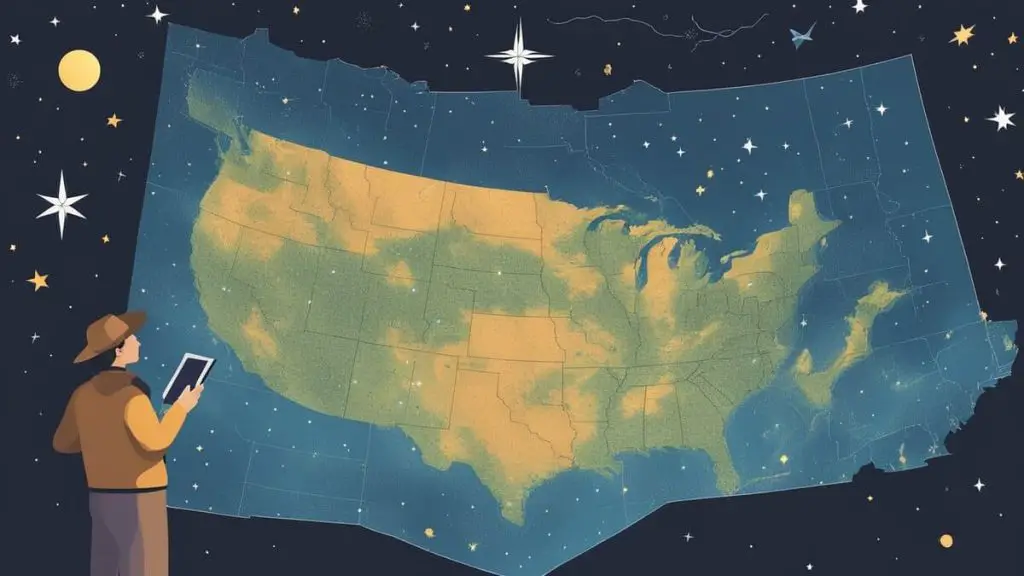
Safety Measures
In planning my dark-sky adventures in Nevada, safety has always been a priority.
Read my article: Is Stargazing Safe?
Due to the remote nature of many stargazing locations, you can expect limited cell service. Make sure to bring a physical map and research the area beforehand. Additionally, always let someone know your travel plans, and make sure to pack an emergency kit with:
- First aid supplies
- Food and water
- Warm clothing
- Flashlights with extra batteries
Travel Nevada
Nevada’s dark skies offer plenty of excellent stargazing locations throughout the state.
One route you could take is the Park to Park in the Dark, starting in Reno and heading north towards Oregon. Along the way, you’ll find several opportunities to venture off the path and explore the beauty of the Lower 48’s darkest skies.
Be sure to watch for Washoe County, as it boasts breathtaking views of the night sky.
Camping and Supplies
To fully experience Nevada’s dark skies, you’ll want to camp in remote locations. This will require bringing your camping gear and supplies for your trip. Prepare a list of essentials, including a tent, sleeping bag, and camping stove.
During your journey, make a pit stop at Bruno’s Country Club in Gerlach, Nevada. Founded in 1953, this establishment provides an opportunity for you to rest, refuel, and grab food supplies before continuing on your adventure.
Preparation is vital to ensuring a safe and enjoyable dark-sky adventure. By taking these steps, you’ll be all set to marvel at the incredible celestial sights that Nevada has to offer.
Connecting with Local Culture
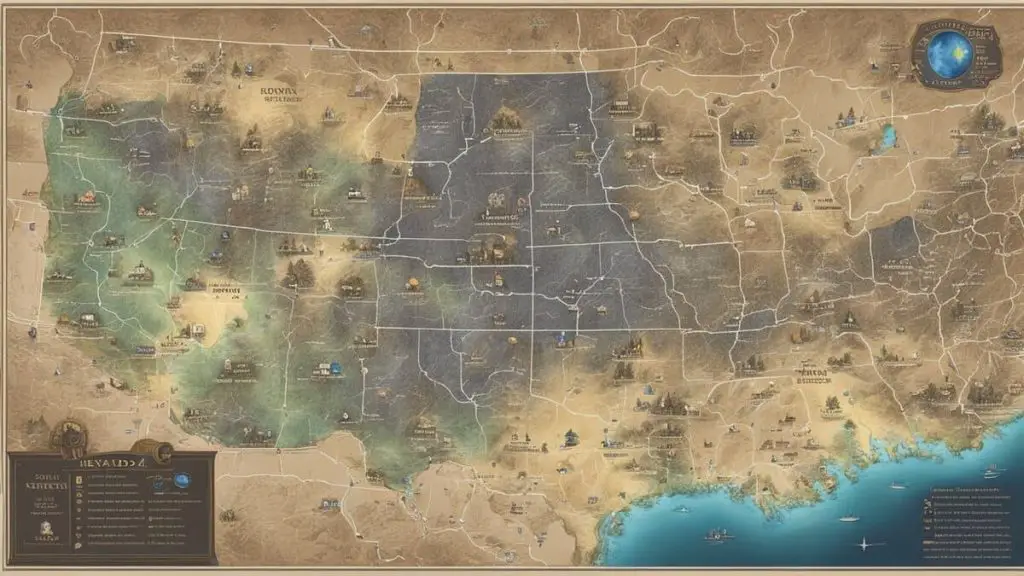
To fully appreciate Nevada’s dark skies, it’s essential to connect with the local culture.
The Northern Paiute people, indigenous to the region, had a deep connection to the night skies and relied on them for navigation, timekeeping, and spiritual guidance.
While exploring Nevada’s dark skies, you’ll have the opportunity to visit Wilderness Study Areas. These protected lands offer not only stunning stargazing experiences but also an insight into the region’s rich history and cultural heritage.
Here are some tips to help you connect with the local culture while enjoying Nevada’s dark skies:
- Learn about Northern Paiute star stories and traditions—these tales can offer a unique perspective on the night sky.
- Visit a Wilderness Study Area and hike to a remote spot for stargazing. Respect the land by practicing Leave No Trace principles.
- Attend a stargazing event or tour led by a knowledgeable guide who can share local history and folklore.
- Appreciate the night sky through the lens of Paiute culture by considering how ancient inhabitants used the stars for navigation, spiritual guidance, and storytelling.
- Engage with locals who have a passion for the night sky and learn how Nevada’s dark skies have shaped their communities.
Remember, by connecting with the local culture, you’re not only gaining a deeper understanding of Nevada’s dark skies but also enriching your stargazing experience.
So, immerse yourself in the history and traditions surrounding these spectacular skies and let the stars guide your journey.
Frequently Asked Questions
What are some recommended practices for photographing the night sky in Nevada’s dark locations?
To capture Nevada’s starry nights, use a camera with manual settings. Set a high ISO, use a wide aperture, and try exposures from 15 to 30 seconds. A tripod is essential to prevent camera shake and maintain sharpness in your photos.
Can I see the Milky Way with the naked eye in Nevada, and if so, when is the best time?
Yes, the Milky Way can be seen with the naked eye in Nevada’s dark sky areas. The best viewing times are on clear summer nights, from late May through early August, when it’s prominently visible overhead.
How do seasonal changes affect stargazing in Nevada, and what’s the best season to plan a visit?
Seasonal changes affect visibility and the celestial objects you can see. Summer offers a view of the Milky Way. At the same time, winter provides longer nights and the chance to see different stars and constellations. Fall and spring offer comfortable weather for extended night sky observations.
Final Words: Dark Sky Map Nevada
As you gaze upward at the majestic night skies of Nevada, remember that each star has a story. Whether you’re a seasoned stargazer or picking up a camera for the first time, the cosmos offers an endless canvas to explore. Embrace the quiet solitude under the silver-lit sky and let the universe reveal its wonders.
Keep your eyes wide, your lenses clear, and your mind open. The stars are not just points of light; they are beacons of the past, present, and future, waiting for you to uncover their secrets.
Clear skies and happy stargazing in Nevada!


